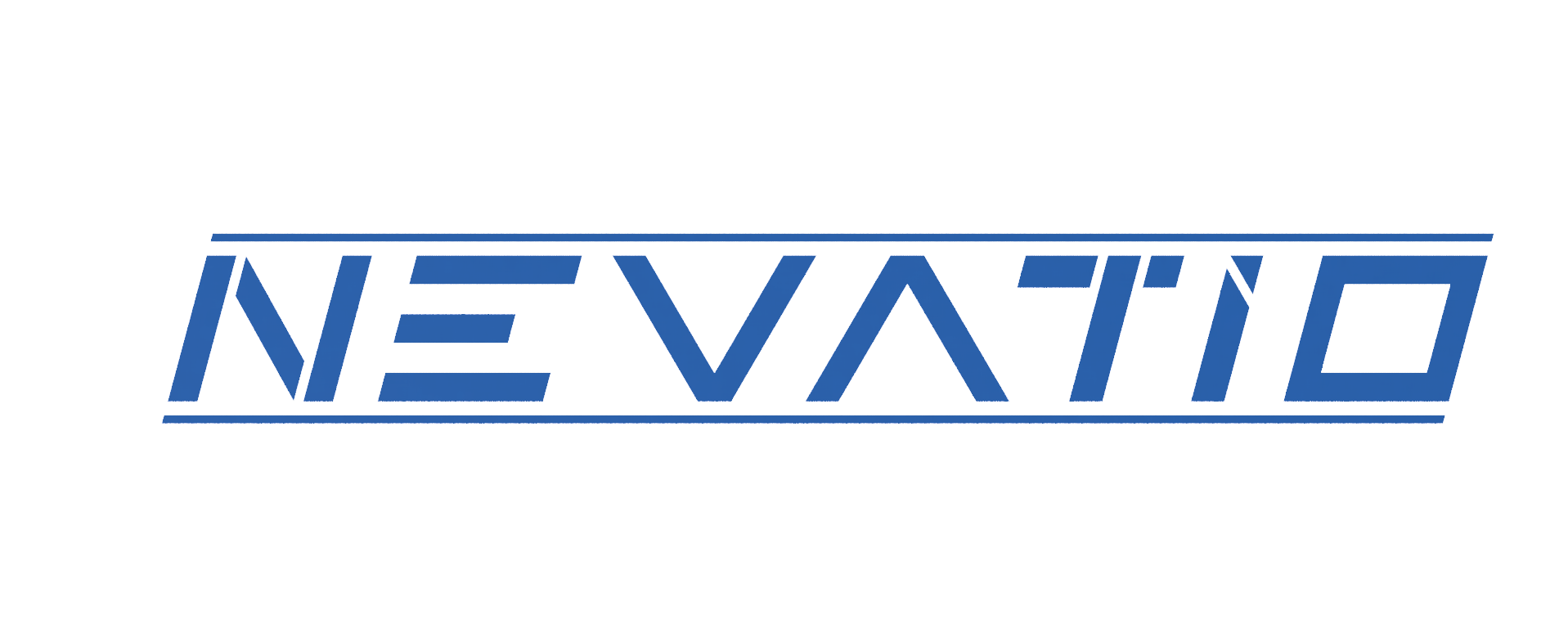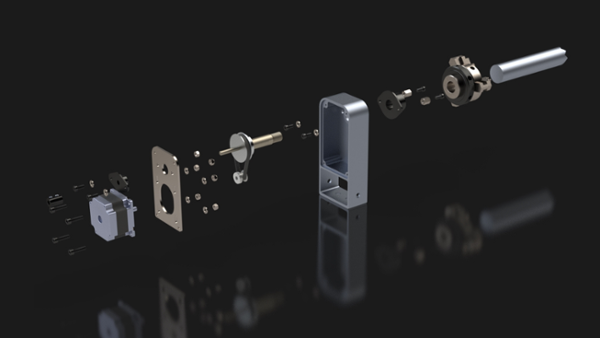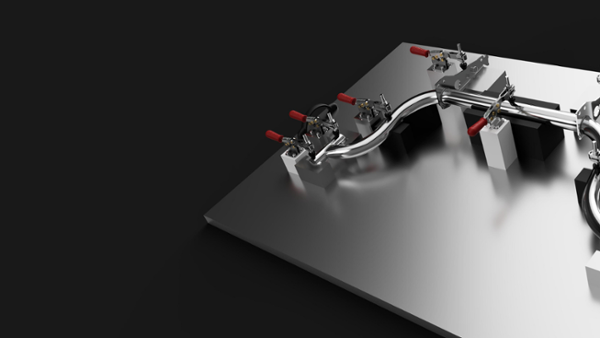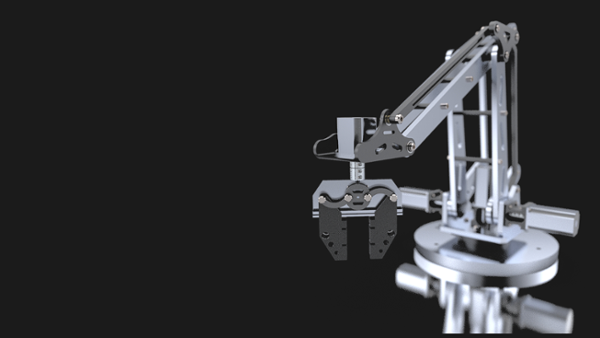Control, Instrumentation and Automation Engineering
Resources
PLC (Programmable Logic Controller)
A PLC controller is a small electronic device designed to control the operations of various electromechanical equipment. PLCs are used for controlling an assembly line in manufacturing, machines in high-tech production environments, robotic systems, and any other application where specific actions need to be taken based on defined logic or events.
Components
PLCs consist of different components like: An I/O system that consists of digital and analog modules; A central processing unit (CPU) which is normally a microprocessor with memory; And lastly, a human machine interface (HMI) which allows you to configure the PLC and monitor its status from a computer within the same network if connected to one.
PLC controllers can be programmed or customized to carry out virtually any application or process. PLCs, like microcontrollers, are used in a large range of applications and PLC programming languages allow them to function in various different scenarios.
PLCs can handle input/output tasks just like any other computing device and communicate with sensors and actuators over a digital interface such as RS-232, RS-485 or Ethernet.
Inputs & Outputs (I/O)
Inputs can include push buttons, control panel switches or discrete signals like sensors that indicate if something like an electric door lock has been opened. Outputs can include switches, valves, lights, pumps, fans etc. that are turned on or off depending on the input conditions.
The I/O modules of PLCs are normally pre-built with certain types of sensors and switches already connected through plug points on the controller's front panel by factory engineers at the time of making a new process control system. There are different kinds of I/O modules available for taking inputs from various types of sensors like temperature sensor, pressure transducer, limit switch etc .
Programming
PLC's are programmed using specially designed computers with the PLC programming software installed. These days, companies that supply PLC controllers will also provide a basic version of programming software free of cost for smaller projects.
When configuring a controller system, the user programs what inputs and outputs have to be monitored by the PLC and how they should operate in response to certain conditions. Thereafter, the logic is implemented on the controller by setting up tables that determine what actions take place under given conditions. For example, "If Pressure High then Open Valve".
There are many types of programming languages for PLC such as Ladder Logic Programming Language, Functions Block Diagram (FBD) & Sequential Function Chart (SFC). An SFC is a way of representing a programmed logic controller by means of flowchart symbols.
The notation used in PLC's is similar to that used for writing computer programs, and sometimes PLC programming courses also require knowledge of basic computer science concepts. PLC programming involves the PLC to be configured by the PLC program, which is written in PLC programming language.
Electronics
PLCs are Semiconductor Digital Devices made up of Flip-flops, Registers and Counters. PLCs can be of different types like:
1) Standard Function (SF): Used to control the equipment using On-Off Control i.e. ON when there is a 'High' logic signal at input and OFF when it's Low
2) Standard Function with Timer Off Delay (STO): This type of controller has an added feature of providing Off delay timer function for Controllers that require time delays between switching actions i.e., it turns on the load after 'n' seconds, where n=Timer value which can be set up in Controller memory by user according to requirement
3) Standard Function with Counter & Timer On Delay (SFC): This type of class provides similar features as STO controller and also provides ON delay timer to the equipment i.e., it turns on the load after 'n' seconds, where n=Timer value which can be set up in Controller memory by user according to a requirement.
4) Standard Function with Input/Output Module (SFI): It contains two input and two output channels for controlling external devices such as solenoid valves etc.
5) Programmable Process Controller (PPC): It has all features of SFC plus additional I/O functions to control actuators and sensors and other external equipment. PPCs are suited for complex applications like distillation columns, process vessels, and gas plant lines that require more inputs and outputs compared to standard function controllers.
Applications
PLC devices are mostly used for electrical control applications such as starting/stopping large motors, packaging automation or regulating/controlling valves for HVAC or Water Treatment plants etc.
PLC's can also be used in process industries such as Oil & Gas, Chemical or Water Treatment. PLCs consist of different components like An I/O system that consists of digital and analog modules; A central processing unit (CPU) which is normally a microprocessor with memory; And lastly, a human-machine interface (HMI), which allows you to configure the PLC and monitor its status from a computer within the same network if connected to one.
PLCs are used in applications that require machine control, management, or data collection. PLCs were initially designed to replace relays and mechanical controls.
PLC brands
There are many brands of PLC devices available in the market. Below is a list of some reputable companies that provide PLC products:
- B&R Automation,
- Beckhoff Automation,
- Bosch Rexroth,
- GE Fanuc Automation,
- Mitsubishi Electric/MELSEC,
- Omron Automation and Control,
- Pepperl+Fuchs GmbH & Co KG.,
- Rockwell Automation (Allen-Bradley)
- Siemens
HMI (Human Machine Interface)
What is a Human Machine Interface
A Human Machine Interface is part of a PLC, which allows you to monitor/configure the PLC and PLCS system. PLC manufacturers provide their PLCS proprietary HMI software that is compatible with all PLC units manufactured by PLC Manufacturer.
There are different types of PLCS HMI's available in PLC market which includes Panel View 600, Panel View Plus 620S , Panel PC 7000 etc.,
What is an HMI used for?
HMI's are used to monitor PLC variables in real-time, PLC variables are accessible from HMI, PLC can change PLC variable values in PLC by sending the value across to the PLC if required. HMI's are also capable of storing all records pertaining to PLC activity within a database.
HMI's can be used as a PLC to PLC interface. PLC manufacturers provide PLC programming languages such as Ladder Logic, Function Block, etc., along with PLCs which allow users to instrument their PLC programs conveniently using HMI.
PLC manufacturers also provide connectivity software tools for easy interfacing between PLCS and PLC programming software tools. PLC manufacturers also provide PLCS connectivity options such as OLE for process control (OPC), mysap PLCS, and Modbus PLCS, etc.,
Who Uses HMI?
HMI is used in manufacturing industries to improve quality and reduce downtime. HMI is also used to visualize the working of a system, also referred as a Supervisory Control and Data Acquisition (SCADA) system which allows a data center or personnel from remote locations to have access to PLCs & ICS using PCs equipped with HMI software.
HMI technology is used by almost all industrial organizations, as well as a wide range of other companies to optimize their processes and interact with machines.
Industries using HMI include:
- Energy
- Food and beverage
- Manufacturing
- Oil and gas
- Power
- Recycling
- Transportation
- Water and wastewater
- And many more
In industrial settings, HMIs can be used to:
- Visually display data
- Track production time, trends, and tags
- Oversee KPIs
- Monitor machine inputs and outputs
- And more
What are the different types of HMI?
There are several types of HMIs available in the market, some examples include:
- Panel View Plus 620S
- Panel PC 7000
- CPU Series
- Panel on Terminal Series
- Panel PC e+
- Panel View 700
- PLC on terminal series
- MYSAP HMI
- Modbus HMI
- OPC server
Which is Better HMI or PLC?
HMI devices have limited functionality compared to PLCs. PLCs are more complicated and have a wide range of applications, which makes PLCs a better choice overall.
Different types of HMIs available for industrial applications HMI panel view 700 provides a simple user interface to make it easier for users with limited knowledge of SCADA systems.
What is the Difference Between HMI and SCADA?
Supervisory Control and Data Acquisition (SCADA) is one of many industrial control systems that monitor machinery or infrastructure for efficiency, while HMI refers to the human-machine interface component. The two terms are often used synonymously since they each provide different functionality but both have opportunities in modern manufacturing environments where data acquisition may be necessary.
In other words, HMI is a subset of SCADA. A SCADA system consists of three basic components:
- Distributed control systems (DCS)
- Supervisory Control and Data Acquisition (SCADA)
- Human Machine Interface (HMI).
A HMI device provides the user interface for accessing data from a PLC or DCS.
A SCADA system provides remote access to PLCs and other devices over a network. It displays the status of the process and any control actions performed by operators or automatically by the system.
Control Engineering
Control engineering is a discipline within the field of engineering that applies control theory to the design and analysis of processes, machines and systems.
Applications
Control engineering is used for:
- Process Control (PLC),
- Energy Control (HVAC PLC, Energy Management Systems)
- Transportation Control (Railway PLC system)
- Manufacturing Control (Robotics PLC)
- Building Automation Systems (HVAC PLC, Lighting PLCs, Security PLC)
Sub-disciplines
Control engineering has several sub-disciplines:
Industrial Process Control (IPC) which is used as an industrial and manufacturing automation tool to monitor and control physical or chemical processes;
Automation Instrumentations which is used to monitor and control instruments;
Robotics which is used to program robotic machines or controllers for performing certain tasks automatically.
Industrial Process Control (IPC)
An industrial process uses control engineering in the automation of machine, equipment and processes within an industry. The aim of IPC is to increase productivity while reducing cost and environmental impact.
Industrial Process Control (IPC) using PLC
Industrial process control involves collecting and processing data from sensors and instruments, controlling the physical equipment and automating industrial processes to improve productivity.
PLC units can be used as a replacement for DCS system if the application is not very complex or time-critical such as Material Handling Systems in warehouses, elevators etc.,
PLC can control valves generating signals to drive actuators or stepping motors. PLC units are also used by plant engineers in the automation of plants for batch production.
Control engineering primarily involves the study of various control loops and their implementation. Control loops are the feedback mechanisms in PLCs and PLCS, which allow PLC to control PLCS system components such as sensors and actuators.
Instrumentation and Controls Engineering
Instrumentation engineering focuses on control processes that use sensors as an input.
Feedback from such sensors can be used throughout the system operation process. The sensors can measure and monitor parameters such as specific machine outputs, the efficiency of systems and, most importantly, safety parameters.
Instrumentation and Controls engineers also play an extremely important role in the monitoring and recording of quality data to ensure the safety and reliability of the system.
The ultimate goal of instrumentation engineering is to ensure that control machinery and processes are operating to achieve maximum productivity in an optimally efficient, safe and reliable manner.
Instrumentation engineers may be responsible for any part of the control process' lifecycle. Related tasks include planning, design, development, and installation of a new process. They could also monitor, maintain and manage teams responsible for control systems already in place.
What Is Process Control Instrumentation?
Process control instrumentation is the equipment used in industrial plants to measure and control product quality. It can be defined as any device or system that measures, records, compares, or controls the physical properties of a material or process.
The following are examples of process control instrumentation:
- Weight Measurement System
- Flow Measuring System
- Pressure Gauge
- Sensor
Instrumentation engineering is one of the sub-disciplines of control engineering that deals with monitoring, measuring, controlling, and recording physical quantities.
Control Algorithms
A control algorithm is a fundamental part of a feedback loop in a PLC or other industrial automation system. A PLC needs to execute a control algorithm to automatically control an industrial process.
Control algorithms are used in many applications, but are most commonly associated with industrial machinery and factory automation systems.
Process analysis
What is process analysis?
Process analysis engineering is a key theme in the field of engineering and design. This one discipline uses different methods and principles to study how processes work, what their inputs are, outputs created by these input-process interactions; as well as other factors that may influence or affect them at any given time.
The ultimate goal for engineers in this area of expertise is to use findings from studies to improve efficiency while reducing waste through better design choices made with realistic data taken into account when designing machines.
Benefits of Process Analysis
The study of inputs, outputs, and other factors that influence the conditions inside a given process is known as process analysis. This concept can be applied to many different fields within industrial engineering.
From the design phase all the way through production, companies may use this approach to ensure optimal operation of equipment throughout its lifespan.
Benefits for Process Engineers
Process engineers may or may not be involved in the process analysis engineering phase of a project; however, this underlines the importance for them to understand its significance and how it can affect their own duties as well as those of their colleagues and other employees.
The end goal is to improve efficiency and reduce waste. This can be done by taking into account how best to operate the process before it has even been created, which helps refine ideas for design in the early stages of development.
Better outcomes in terms of efficiency and waste reduction may influence re-negotiation or expansion of contracts, giving companies in this sector a competitive advantage over their peers who do not employ process analysis engineering to this same degree.
Disadvantages of Process Analysis
This discipline is not without its disadvantages either, however. The fact that technology has advanced so far in the last few decades means there are fewer inefficiencies for engineers to target when it comes to improving processes. Although this in itself can be seen as a positive – there is no waste to eliminate – it can also lead process engineers to become complacent and fail to see the wood for the trees.
If a company makes use of process analysis engineering as part of their design and development phase but ignores its findings when it comes time to actually set up and start using the equipment in question, they may soon find themselves falling behind on the curve compared to their peers.
A negative aspect of process analysis is that it may turn a process engineer too inwardly focused, leading them to overlook potential contributions from other areas such as human resources and IT infrastructure.
Safety Controls
What are Safety Controls?
Automation can help to reduce human exposure to hazards that exist in industrial processes. To accomplish this, safety instrumented functions are run by digital or programmable logic controllers (PLCs).
Safety instrumented systems are designated to monitor physical conditions and send out alerts when something is detected.
Functional safety implies the capability of a system or a machine to perform its intended safety-related functions under specific conditions. In the case of process automation, the system should be able to operate in a safe manner even when something goes wrong or fails.
Functional safety involves three main topics:
1. The requirement for functionality—the function has to work correctly and meet user specifications.
2. The requirement for interaction—the system should work smoothly with the other safety-related components of the machine or process, and it should be clear how to maintain that functionality.
3. The requirement for dependability—the system has to stay functional throughout its lifetime; i.e., it needs fault tolerance design.
What is Functional Safety?
Functional safety is the task of ensuring that equipment and machinery meet its functional requirements. Functional safety is one of the most important factors in designing safe automated processes.
Functional safety ensures that user needs are met with minimal risk to people, property, or the environment. It also provides protection against physical, health, and economic consequences caused by external events.
Functional safety is often expressed in the form of functions, which are defined in IEC 61511 as "a specific behavior or mode of behavior when activated."
There are six different types of function identified by IEC 61511:
- Monitoring—detecting an abnormality, determining its cause and reporting it.
- Basic control—controlling the process in normal running conditions to achieve predefined targets.
- Interlocking—ensuring that the function only operates if other functions are either not operating or are operating safely, performing interlock-type blocking of certain actions before others can start/continue, and stopping activities if parameters are outside specified limits.
- Output control—controlling the process to ensure that an output condition is achieved or maintained within safe limits, either manually or automatically using feedback from one or more inherent properties of the process.
- Manual override—providing a means for overriding other functions in order to take manual control of the equipment to maintain it in a safe state or assist in executing another function.
- Shutdown control—performing actions to bring the process to a controlled stop, either automatically or manually.
The goal of functional safety is to ensure that the way the human interacts with equipment does not compromise its ability to fulfill its intended purpose, which can have dire consequences if ignored.
Humans may not always be aware of the safety consequences of their actions and this can lead to mistakes, such as putting a hand in a location where it could get caught.
The threats that functional safety aims to protect against include:
1. Unintentional actions
The person who is interacting with the machinery accidentally presses the wrong button, engages the wrong control, or enters incorrect information into a controlling device. In some cases, it may be possible for human error to have been eliminated but other errors due to mechanical breakdown could still occur.
2. Intentional actions
The person who is interacting with equipment intentionally takes an action that might compromise its ability to operate safely and thus endanger people or property. Intentional actions also include those that could be taken as a result of coercion.
3. External events
External events such as earthquakes, floods, fires and other natural phenomena. The severity of an external event will depend on the location where it occurs and its ability to disrupt the process safety equipment needed to provide adequate protection.
The consequences of functional safety failures can be:
1. Loss of containment (e.g., loss of a process vessel, rupture or fracture)
2. Release of energy (thermal, kinetic, pressure wave and noise)
3. Fire and explosion hazards (including chemical and electrical flash fires)
4. Release to the environment
5. Collateral impact, such as damage to structures or equipment from released energy (thermal and kinetic), and activation of other devices and systems which may not be intrinsically safe (e.g., release valves).






